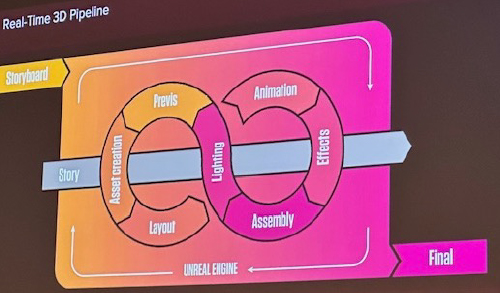UNITING IN THE AI ERA EMBRACING TECHNOLOGY AND COLLABORATION FOR COLLECTIVE SUCCESS
March 5, 2024

By Roxana Lissa is the Principal of Blue Public Relations in Los Angeles.
I just attended the annual Pulse conference at UCLA Anderson. The conference brings together leading executives to share insights and perspectives on the current trends, opportunities, and challenges impacting the entertainment, sports, and technology industries.
I was inspired to hear from my friend Fabiola Torres and other panelists in animation, emerging technologies, and music on the importance of welcoming AI and these incredible new tools, leaving with us a clear message: we need to leave nostalgia behind from the good old days and embrace this new era of uncertainty with a desire to learn and innovate.
Ari Wallach’s most recent book “Longpath,” describes this era as intertidal, a period between what was and what will be. He talks about how Now is the right time for a perspective shift. This in-between – he says – requires a new way of thinking and a long-term mindset by taking advantage of this transitional period instead of fearing it.
In an eye-opening presentation, entertainment and emerging tech executive Christina Lee Storm couldn’t resist her excitement in sharing her insights and various AI examples, such as Sora, and how new technologies offer unique opportunities for content creators. She is living this intertidal phase with enthusiasm and passion as she paves the way in AI adoption and emerging technologies for narrative, digital, and multi-platform storytelling technologies.
I found one of her charts fascinating, where she showed how a Real-Time 3D pipeline ideally should function today compared to the past, and the similarities with advertising shined through. The silos are dismantling, and while learning technical skills is imperative, soft skills will always be required to navigate this new world. Adaptability, interconnectedness, collaboration, and ethical awareness will be crucial for success.

It was also exciting to hear from Luisa Huang, co-founder and COO of Toonstar – a Web3 animation story studio with a new storytelling model that allows NFT holders to participate in narrative development and create their characters and storylines. Similar to the advertising world and big productions, they were able to leverage the fact that many productions are getting canceled, and it’s more difficult to innovate and get things done in the traditional Hollywood studio system.
She offered an interesting take on AI and how it’s helping level the playing field for content creators from around the globe, who, in most instances, don’t have access or opportunities in LA and NY and can now rely on AI to develop their content and animations to make them available to online communities around the globe.
Lastly, Fabiola, currently GM & CMO, SVP Energy Category at PepsiCo, described how despite all of these tools being available now at our disposal, it’s always important that the thinking continues to be the same and the brand storytelling doesn’t get lost: to be essential for consumers. Her daily regime includes listening to consumer engagement on her brands’ social media channels and reviewing the data simultaneously for the most updated consumer insights.
She also commented that in her prior experience at Nike and Apple, it was more about the art than the science, and today, in her new role, brand storytelling and performance marketing go hand-in-hand as one orchestrated effort.
What are the common denominators between these emerging new technologies, marketing, and this new intertidal environment we live in right now? We are merging our collective experience and creating a more honest and mutually dependent relationship with one another. Whether you are a savvy consumer, brand, agency executive, content creator, or studio, the richness – in my view – lies in mutually supporting and elevating each other. Uniting and collaborating can nurture a more profound sense of interconnectedness in this new AI era. Welcoming new technologies will be critical for our growth, and so will our innate need for human engagement.































